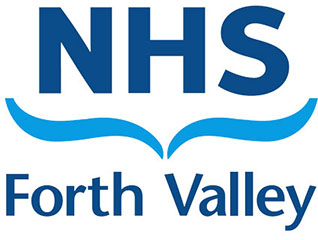New Breast Cancer Assessment Pathway Helps Prevent Delays in Diagnosis
A new breast cancer screening pathway can ease pressure on GP practices and prevent delays in diagnosis, research led by the University of Stirling has found.
Dr Erica Gadsby, of the Faculty of Health Sciences and Sport, evaluated a pilot project by NHS Forth Valley, which was funded by Cancer Research UK as part of the Test Evidence Transition (TET) programme.
It saw people who found a lump in their breast referred directly to a breast assessment clinic without the need for an initial GP appointment or a subsequent wait for a referral appointment.
Prior to the pilot, people in Forth Valley who found a breast lump were asked to contact their GP for an initial appointment before they were referred to a specialist breast clinic at Forth Valley Royal Hospital.
Dr Gadsby found that the direct pathway to one-stop breast assessment clinics for patients presenting with a breast lump improved the patient experience, prevented delays in diagnosis, and had the potential to free up GP time.
Eliminating the need for an initial GP appointment also reduced overall costs, according to the evaluation, with average differences per patient ranging from £15.81 to £41.68.
NHS Forth Valley has now implemented the streamlined pathway across all GP practices in the health board area.
Dr Gadsby, Associate Professor of Public Health, said: “The evaluation showed that the new pathway successfully removed an unnecessary step in the referral process for eligible patients, offering a safe, efficient, and cost-effective alternative to the traditional model.
“Clinical outcomes remained consistent with previous standards, while patient feedback highlighted strong support for the pathway, particularly its speed, convenience and clarity.
“The findings suggest that this approach not only benefits patients but also has the potential to ease pressure on general practice, which is especially important in areas where accessing timely GP appointments can be difficult.
“Working alongside frontline staff, we identified key lessons for implementing this pathway in other areas. Clear communication, local leadership and investment in staff training were all critical to the pathway’s success in Forth Valley.”
Dr Gadsby worked closely with NHS Forth Valley colleagues to design and deliver a robust assessment of the new fast-track breast lump referral pathway.
The evaluation was co-led by Honorary Professor Juliette Murray, Consultant Breast Surgeon at NHS Forth Valley, who said: “We already ran one-stop breast assessment clinics that allow people referred by their GP to get a range of breast cancer diagnostics during a single visit, often providing reassurance that it’s not cancer.
“Enabling patients who discover a breast lump to access these clinics without attending an initial GP appointment has further streamlined the pathway, supporting rapid assessment and timely care.
“The improved pathway has now been successfully implemented across all GP practices in the Forth Valley area, demonstrating its effectiveness at our local level. It has freed up GP appointments and removed a step in the process of getting patients the tests they need as quickly as possible.
“This approach clearly benefits patients, GPs and the wider healthcare system. Our evaluation has identified valuable lessons for other health boards considering the adoption of a similar pathway.”
In a nine-month period from August 2023, 393 patients attended the breast assessment clinic following a direct referral from a GP practice in Forth Valley.
Patients emphasised the importance of clear, timely communication about the referral process, which played a crucial role in fostering confidence in the pathway.
“The GP receptionist was very empathetic,” one patient said, “she went on to explain how they would refer me straight away and I wouldn’t need to see the GP first. She clarified my understanding and ensured I was happy. They were happy for me to book and see a GP if that would make me happier, which I thought was good, which I didn’t need, though some people might. I was very impressed.”
Some patients felt more confident about going directly to the breast assessment clinic and reported feeling more empowered – they were being taken seriously, knew their own body and that something was concerning.
“I didn’t feel I needed a GP appointment,” said another patient, “I could feel the lump. I don’t need someone else to say it’s there, I know it’s there.”
Some patients also appreciated the removal of an unnecessary step in the pathway, which benefitted both their own experience and the efficiency of NHS services.
Another patient said: “I thought, miss out the middleman – for want of a better way of putting it – and just go straight through that rather than waste maybe a week to get the appointment with the doctor.”
Dr Gadsby added: “This project is a strong example of how collaborative, evidence-based innovation can improve patient access and experience, while supporting a more sustainable healthcare system.”
Cancer Research UK provided £900,000 in funding for Phase 1 of TET, a multi-phase programme of commissioned research activity which included the Access to Breast Cancer Assessment Clinics Without GP Appointment pilot.
Naser Turabi, Director of Evidence and Implementation at Cancer Research UK, said: “We are pleased to highlight the success of this initiative streamlining access to specialist breast assessment, led by NHS Forth Valley and delivered through our Test Evidence Transition Programme.
“Discovering a lump can be an incredibly anxious time, so enabling patients to access breast assessment clinics more directly without attending an initial GP consultation is beneficial.
“It is encouraging to see this new breast pathway now implemented across all GP practices in the region. We commend NHS Forth Valley for this achievement and encourage other NHS systems to consider adopting a similar approach to enhance patient care and outcomes.”
Find out more about the NHS Forth Valley pilot here and find out more about TET here.





